Exploring Al Qana's Transformative Role in Dubai Real Estate
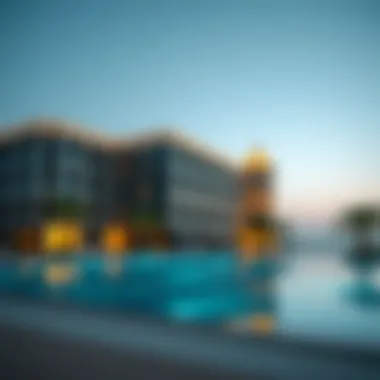
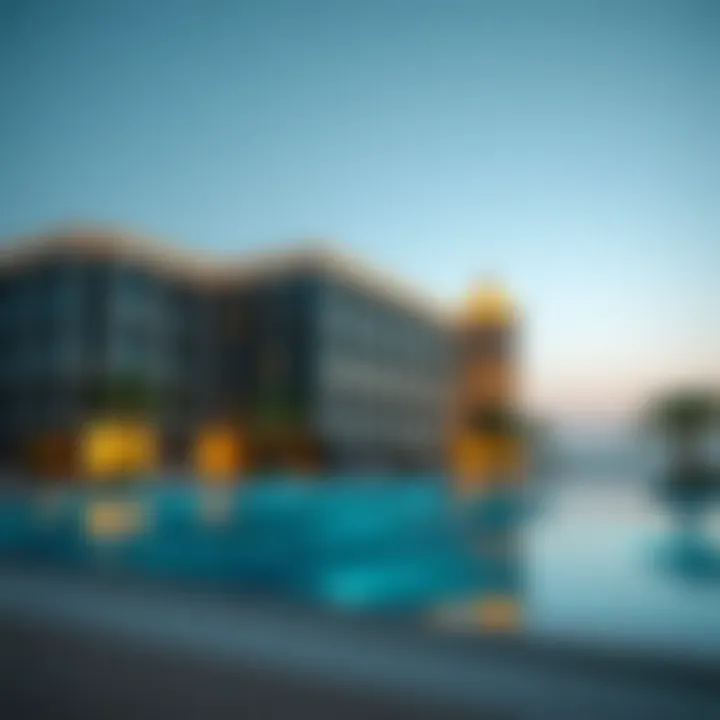
Intro
In recent years, Dubai has consistently been recognized as a frontrunner in global real estate innovation, and projects like Al Qana epitomize this forward-thinking approach. Al Qana serves more than just a commercial need; it's a microcosm of the city’s aspirations. Understanding its essence is crucial for investors, analysts, and stakeholders engaged in this dynamic market. The project comes alive with not only architectural finesse but also for its profound connection with the community and the local culture.
Before navigating the specifics of Al Qana, it's essential to paint a backdrop of the broader market trends influencing its success. A clear grasp of the local real estate landscape will elucidate the factors driving demand and investment in projects like Al Qana. Let's delve into the current landscape and how emerging neighborhoods are shaping Dubai's property market.
Preface to Al Qana
Delving into Al Qana unveils a significant chapter in Dubai's ongoing real estate narrative. This innovative project stands not just as a geographical location, but as a catalyst for economic and cultural growth in the region. The impact of Al Qana goes well beyond mere tangible structures; it represents a confluence of creativity, investment, and community involvement that is reshaping the urban landscape of Dubai.
Defining Al Qana
Al Qana is much more than just a set of buildings; it’s an ambitious urban development project situated at the heart of Dubai. This vibrant locale integrates residential, commercial, and recreational spaces designed to resonate with the lifestyle aspirations of modern urbanites. With a layout that promotes easy accessibility and an environment conducive to social interaction, Al Qana aims to redefine what it means to live and work in Dubai. This development fosters a blend of cultural experiences, economic vitality, and environmental consideration, engrossing both residents and visitors alike.
- The project seeks to integrate various types of residential units with retail spaces, ensuring a holistic experience.
- Aiming to attract not only local residents but also foreign investors and tourists, Al Qana stands as a microcosm of Dubai's growth ambitions.
Historical Context
To fully grasp the ethos of Al Qana, one must consider the historical tapestry from which it emerges. Dubai's transformation from a humble fishing village to a global metropolis in just a few decades is nothing short of remarkable. Influenced by the oil boom in the late 20th century, the city saw rapid urbanization and infrastructural development, establishing itself as a hub for expatriates and tourists. Al Qana symbolizes the next step in this evolution, reflecting a shift from purely commercial aspirations to a more integrated approach that values the quality of life.
This historical lens lays the groundwork for understanding the impact Al Qana is poised to have on the real estate market.
- As Dubai continues to evolve, projects like Al Qana signal a commitment to sustainability and community, seeking to balance growth with liveability.
- Furthermore, it serves as an example of how contemporary urban solutions can navigate the complexities of urban expansion in a thriving economy.
Thus, exploring Al Qana is crucial for investors, analysts, and anyone looking to grasp the future of Dubai's real estate sector. Understanding its foundational definitions and historical significance provides essential insights into the dynamics at play within this flourishing market.
Architectural Features of Al Qana
The architectural features of Al Qana play a pivotal role in shaping its identity within Dubai’s real estate landscape. Rather than simply existing as a series of buildings, Al Qana embodies an integrated design philosophy that reflects the aspirations of the city itself. From innovative design concepts to sustainable building practices, the architectural elements here contribute significantly to both functionality and aesthetics. They don't just create a visually appealing experience; they encapsulate the values of modern urban living.
Innovative Design Concepts
Incorporating dynamic design principles, Al Qana stands out as a testament to architectural creativity. The development is characterized by its open layouts, which foster interaction and a sense of community among visitors. Notably, the façade of many buildings combines traditional Emirati motifs with sleek, modern lines, creating a visual narrative that is both rich and inviting.
- Multi-functional Spaces: Al Qana features adaptable spaces that can host a variety of events, from art exhibitions to culinary showcases. This flexibility enriches the experience of visitors and enhances its appeal to potential investors.
- Visual Connectivity: Large glass panels allow for natural light to flood interior spaces, enabling a seamless transition between the indoor and outdoor environments. This connection promotes a sense of well-being, as well as a deeper appreciation for the surrounding landscape.
These innovative design choices are not just about aesthetics. They enhance functionality and comfort, contributing to an overall culture of livability. In today’s competitive market, this adaptability is increasingly crucial for attracting a diversity of stakeholders, including residents, businesses, and tourists.
Sustainable Building Practices
Sustainability is woven deeply into the architectural fabric of Al Qana. The developers have prioritized eco-friendly practices from the initial planning stages to construction and beyond. This commitment not only aligns with global sustainability goals but also responds to the growing demand for responsible urban development.
- Energy Efficiency: Many buildings within Al Qana utilize solar panels to significantly reduce energy consumption, thereby lowering operational costs for residents and tenants. This benefits the community and holds immense attraction for eco-conscious investors.
- Water Conservation Technologies: Systems designed to reduce water waste, such as rainwater harvesting and greywater recycling setups, are also integrated, ensuring the sustainability of natural resources.
Such sustainable practices provide a template for future developments, signaling to the market that eco-friendliness and innovation can indeed go hand in hand.
"The architectural vision for Al Qana is not just to create structures; it is about building a sustainable future for Dubai."
In summary, the architectural features of Al Qana highlight the development's commitment to innovation and sustainability. By weaving aesthetic appeal with functional design, it expresses a forward-thinking approach to urban living. These attributes position Al Qana not only as a desirable location but also as a model for future projects in Dubai and beyond.
Economic Implications of Al Qana
The economic implications of Al Qana extend far beyond its geographical footprint. This enclave is set to forge significant pathways in Dubai's financial and real estate realms. As urban developments spring from the earth like mushrooms after rain, understanding their economic impact becomes crucial for investors, agents, and other stakeholders. Al Qana, with its ambitious vision, offers fertile ground for discussion on local economic growth and investment potential.
Impact on Local Economy
Al Qana's development resonates within the local economy in multiple ways. One cannot overlook the substantial job creation aspect. As construction crews and ongoing operations ramp up, local employment skyrockets. The labor market benefits, with skilled and unskilled workers finding opportunities to earn a living. This influx of jobs energizes spin-off businesses, boosting everything from local cafes to construction material suppliers. The traditional community looks to gain traction as the value of the labor force rises with such projects.
Moreover, as visitors flock to Al Qana, they bring with them a hefty wallet. The influx can lead to a noticeable increase in retail sales, positively impacting local small businesses. Not to mention, tourism in Dubai is a major revenue stream. If Al Qana effectively captures a sizable tourist demographic, we will likely witness a ripple effect that benefits sectors such as hospitality and transport.
As new businesses set up shop around the Al Qana area, property values are set to climb, giving homeowners and investors a solid reason to be excited. This increased demand can create a symbiotic relationship among local business, real estate, and the overarching economy. With more development, though, comes the need for infrastructure improvements—street upgrades, enhanced public transport systems, and perhaps even new schools—the overall economy is like a complex machine where every cog is essential.
"The economic growth through developments such as Al Qana is not merely about numbers; it's about creating a sustainable environment for current and future generations."
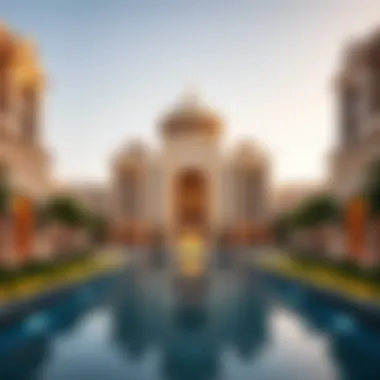
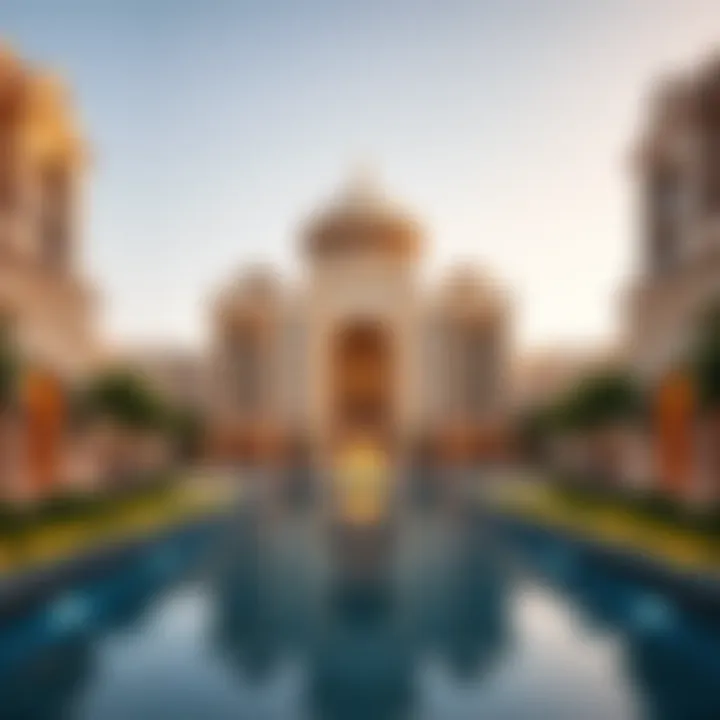
Investment Opportunities
Looking at investment opportunities around Al Qana, the landscape is rife with potential. Firstly, the retail space around Al Qana is a gold mine waiting to be tapped. With dining options, shops, and entertainment venues envisioned in its plans, investors may find lucrative avenues. The growth forecast for both short-term and long-term investors is promising, especially for those looking to invest in Dubai's booming tourism sector.
In addition, Al Qana’s diverse offerings cater to varied demographics—families, tourists, and professionals alike. This balance serves to enhance rental yields for residential or commercial properties. Investors seeking to dive into the rental market can find a burgeoning demand here; a blend of residential, retail, and leisure activities cultivates a lively environment. With more people looking to live and work in Dubai, this development matches expectations, allowing for increased property values.
Furthermore, aligning with Dubai's strategic vision, Al Qana presents options for investors to engage with the city’s broader economic development goals. Incentives for sustainable businesses can be appealing for environmentally conscious investors.
In summary, the Al Qana project is not merely changing the skyline; it's reshaping the economic narrative in Dubai—making it ripe for prospective and seasoned investors alike. Investment opportunities abound, and there's no signs of slowing down.
Community Engagement and Development
Community engagement forms the backbone of any urban development project, particularly one as ambitious as Al Qana. This concept goes beyond the mere construction of buildings and infrastructure; it encompasses the integration of local voices and needs in the development process. In a city like Dubai, where diverse cultures and communities coexist, fostering a sense of belonging is key to the project’s long-term success. When residents feel connected to their environment, they nurture it, contribute to its vitality, and are more likely to invest in or embrace it.
Involvement of Local Stakeholders
Taking a closer look at the involvement of local stakeholders, we can see that their participation is not just a box-ticking exercise. Various groups, including community leaders, businesses, and residents, hold invaluable insights about the area's needs and aspirations. Engaging these stakeholders helps to ensure that Al Qana meets the genuine requirements of the community rather than imposing a top-down vision that might miss its target.
For instance, local businesses can share their perspectives on commercial spaces, possibly swaying the design and allocation of retail areas to be more beneficial for all.
Moreover, local governmental bodies can streamline regulatory approvals when their views are considered in planning stages, thus reducing friction and delays that might otherwise hinder development.
In essence, stakeholder involvement creates a richer dialogue that can lead to a project more attuned with local sentiment.
Creating a Community-Centric Space
The idea of creating a community-centric space lies at the heart of Al Qana's vision. The aim is to bring people together, facilitating interaction and collaboration through shared experiences. The layout of the community spaces, such as parks, plazas, and cultural venues, must encourage a flow of informal encounters and organized activities.
By focusing on community needs, the development can facilitate social cohesion. Designing spaces that accommodate local cultural events, farmers' markets, or art fairs can turn Al Qana into a vibrant hub of activity. Moreover, thought should be given to how amenities and services are spatially organized to minimize barriers to access. A community-focused approach should aim for inclusivity, ensuring that everyone from children to the elderly feels at home.
By implementing feedback loops, where residents can continue to voice their opinions even after the initial development phase, Al Qana can evolve organically, ensuring it remains a relevant and cherished locale.
"The true measure of a great urban space is not how it looks on paper, but how it feels to the people who live and play in it."
The Role of Al Qana in Urban Planning
Al Qana is more than just a real estate project; it embodies the essence of urban planning in a rapidly modernizing Dubai. The integration of Al Qana within the city’s fabric underscores its importance as a model for future urban developments. The development serves as a linchpin connecting various elements of urban life, from residential spaces to recreational amenities, ultimately shaping the city's infrastructure.
Integration with City Infrastructure
The success of Al Qana largely hinges on its strategic location and how seamlessly it integrates with the existing city infrastructure. This integration enhances accessibility, making it easier for residents and visitors to navigate in and out of the area. Key elements of this integration include:
- Road Networks: Al Qana is situated near major highways and thoroughfares, ensuring quick and convenient access for both vehicles and pedestrians. This is particularly significant given Dubai's expanding road network.
- Public Transport Links: The project is well-served by Dubai’s public transport system, including metro stations and bus routes. This accessibility is vital for the sustainability of any urban development.
- Utilities and Services: Infrastructure like water supply, waste management, and electricity are essential considerations. Al Qana's developers have worked to ensure that all necessary services are in place and can support future growth in the area.
"Urban planning is not just about buildings; it’s about creating spaces where communities can thrive". This is precisely what Al Qana aims to achieve by linking its facilities to the wider city framework.
Future Urban Developments
Looking ahead, Al Qana stands as a prototype for future urban developments in Dubai. Its lifestyle offerings and planning philosophy provide invaluable insights into how urban spaces can evolve in response to changing societal needs. Key aspects include:
- Mixed-Use Facilitiess: The concept of mixed-use areas promotes vibrant communities where residential, commercial, and recreational spaces coexist. This model encourages a sense of belonging and enhances the overall quality of life.
- Sustainability Initiatives: Future urban planning must consider environmental impacts. Al Qana is designed with sustainability in mind, utilizing modern materials and technologies that minimize its carbon footprint. This sets a precedent for future developments.
- Cultural Integration: Al Qana’s developers are keen on infusing local culture and heritage into its design. This cultural focus not only appeals to investors but also nurtures a sense of local identity and pride among the residents.
As urban planners evaluate future projects, Al Qana’s blueprint will serve as a relevant case study. Its comprehensive approach to integrating infrastructure, community, and sustainable practices illustrates the path forward for urban development in the UAE.
Cultural Aspects of Al Qana
Understanding the cultural dimensions of Al Qana is essential for grasping its role in the broader context of Dubai's urban development. The significance of cultural initiatives within Al Qana extends beyond aesthetics; it taps into the very fabric of community identity and expression. In a rapidly evolving city like Dubai, where modernity often overshadows tradition, fostering a cultural landscape allows residents and visitors alike to connect with the city's heritage.
Art and Culture Initiatives
Al Qana serves as a vibrant hub for art and cultural initiatives aimed at enriching the local community. By curating exhibitions, performances, and festivals, Al Qana creates opportunities for artists and cultural practitioners to showcase their talent. Events such as art fairs or open-mic nights invite participation from various demographics, promoting inclusivity.
A noteworthy feature is the emphasis on collaboration with local artists, allowing them to tell their stories through various mediums. This approach benefits the artists as well as the audience, making cultural activities more relatable and rooted in the community's values. The initiative therefore aids in rekindling local pride and interest in creative expression.
Some key features of Al Qana’s art and culture scene include:
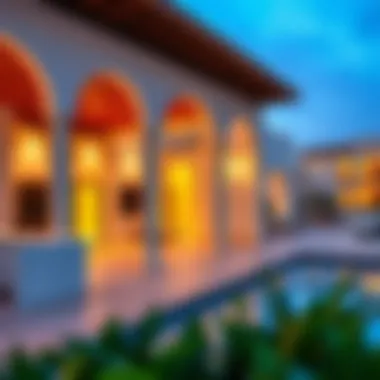
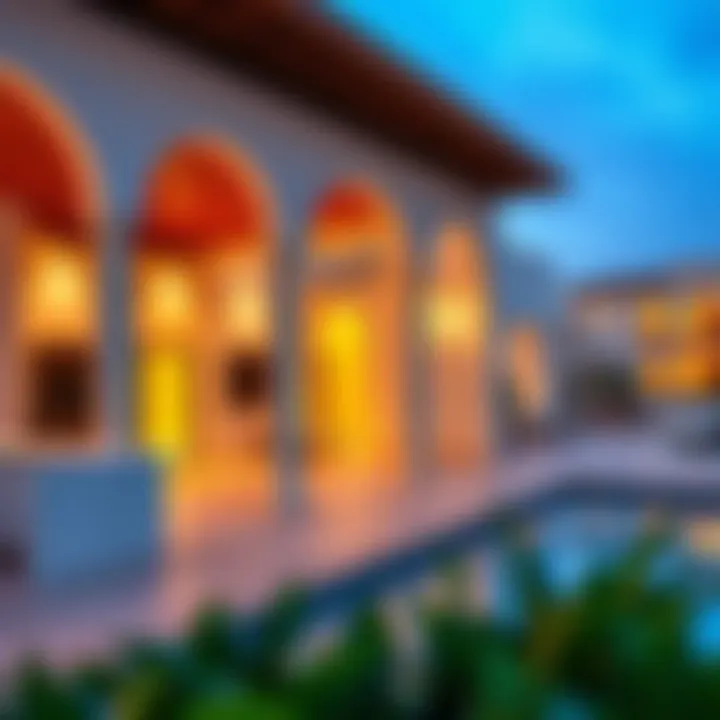
- Workshops and Classes: These are organized to engage with residents of all ages. Participants can learn everything from painting to traditional music.
- Installations: Public spaces within Al Qana are often adorned with sculptures and murals that reflect local heritage, reinforcing cultural values visually.
- Collaborative Projects: Initiatives that partner with local schools and cultural institutions help in cultivating a younger audience interested in the arts.
Nurturing Local Heritage
The effort to nurture local heritage within Al Qana emphasizes both preservation and innovation. While Dubai is known for its futuristic skyline, Al Qana takes a step back to recognize its roots. Various initiatives aim to highlight traditional practices, historic narratives, and the languages of the region.
For instance, workshops that teach traditional crafts or cooking classes featuring local cuisine serve to pass on customs to younger generations. This not only preserves valuable skills but also creates a connection between the past and present.
Moreover, heritage festivals that celebrate Emirati culture each year showcase traditional music, dance, and storytelling. Such events foster a sense of belonging among residents while attracting visitors who wish to experience authentic cultural representations.
Key components of nurturing local heritage in Al Qana include:
- Cultural Festivals: Regularly hosted events that celebrate various aspects of Emirati culture, allowing both locals and tourists to participate.
- Historical Exhibits: Permanent and rotating displays share the history and evolution of Dubai, helping to educate visitors and residents alike.
- Community Involvement: Engaging local residents in the planning and execution of cultural initiatives ensures that the community's voice and input shape the cultural landscape.
"Nurturing culture in a place as modern as Dubai is like watering a plant in a desert – it can thrive, but it needs care and attention."
As Dubai continues on its trajectory of rapid growth, the cultural aspects within Al Qana not only preserve its legacy but also enhance the living experience for its residents, contributing to a more holistic urban environment.
Market Trends Related to Al Qana
The realm of real estate is perpetually shifting, influenced by various factors that evolve over time. Al Qana stands at the crux of these trends in Dubai, embodying not just an architectural endeavor but a reflection of market dynamics that shape investors’ decisions and residents’ lifestyles. Understanding the current market trends linked to Al Qana is vital for anyone involved in this sector.
Current Market Dynamics
When we consider the current market dynamics surrounding Al Qana, several key factors come into play. The surge in demand for urban lifestyle developments is undeniable. In recent years, there has been a notable shift towards mixed-use spaces that integrate residential, commercial, and recreational facilities. In this regard, Al Qana is not falling behind, as it effectively addresses this trend by offering an array of amenities that cater to diverse preferences. More than just apartments, it encompasses dining, entertainment, and community spaces, promoting a vibrant lifestyle.
Several factors underpin these dynamics:
- Economic Stability: Dubai’s overall economic growth contributes to confidence in real estate investments. The government’s strategic initiatives foster an environment ripe for development.
- Target Demographic: The youthful population in Dubai seeks modern living spaces that deliver both comfort and connectivity, something Al Qana promises.
- Tourist Attraction: With an increasing number of tourists drawn to Dubai, properties near key attractions tend to retain higher value. Al Qana’s location is a considerable asset in this context.
"The real estate market in Dubai is resilient, adapting to both global economic fluctuations and local demands."
Future Predictions
Looking ahead, the prospects for Al Qana remain positive, guided by both market indicators and international perceptions of Dubai as a premier destination. Experts believe the trend towards sustainability and integrated living spaces will intensify, leading to innovative designs and environmentally conscious developments.
- Increasing Demand for Sustainability: As environmental awareness grows, projects like Al Qana, which promote sustainability, are anticipated to gain traction among investors and homeowners.
- Technology Integration: Future developments will likely incorporate smart home technologies, ensuring residents experience the utmost convenience and security, aligning with the digital transformation sweeping through real estate.
- Long-Term Investment Potential: With Dubai positioned as a global hub, properties in emerging developments like Al Qana are predicted to see steady appreciation in value. Prospective buyers and investors should keep an eye on enhancing infrastructure surrounding the area, which often promises increased property values.
In summary, keeping abreast of these market trends related to Al Qana is not just essential for current stakeholders but also prime for potential new entrants to Dubai’s expansive real estate market. Understanding these trends can lead to informed decisions that resonate with the evolving needs and preferences of today’s buyers.
Visitor Experience at Al Qana
Understanding the visitor experience at Al Qana is crucial as it serves as a lens to view not only the project's appeal but also its broader impact on Dubai’s dynamic real estate market. A well-designed visitor experience influences foot traffic, enhances community engagement, and shapes perceptions of value. From the moment one steps into Al Qana, there is much to explore—architectural wonders, recreational offerings, and cultural exhibitions await.
Attractions and Amenities
Visitors to Al Qana are met with a smorgasbord of attractions designed to cater to diverse interests. This multi-faceted destination is home to an array of leisure and lifestyle choices, ensuring that both residents and tourists have ample options for recreation and relaxation.
- Aquatic Wonders: The centerpiece is undoubtedly the expansive and serene waterfront. It provides visitors with opportunities for activities such as kayaking, paddle boarding, and more, allowing them to soak in the stunning views of the Dubai skyline.
- Culinary Delights: Food lovers can rejoice with numerous dining establishments that serve global cuisine. Families can enjoy vibrant outdoor dining options while soaking up the atmosphere.
- Cultural Insights: Regular art exhibitions and cultural events showcase local artists and heritage, bridging modernity and tradition. This offers visitors a sense of connection to the local community.
- Fitness and Wellness: For those interested in fitness, Al Qana offers state-of-the-art gym facilities and wellness centers. Just a stroll through the beautifully landscaped parks invigorates and uplifts visitors’ spirits.
These attractions not only enrich the visitor experience but also enhance the overall appeal of Al Qana as a destination that harmonizes both leisure and lifestyle.
Accessibility and Transportation
Accessibility is another critical element in ensuring that Al Qana welcomes and accommodates visitors. In a bustling metropolis like Dubai, efficient transport links are paramount.
Several factors contribute to the ease of access at Al Qana:
- Public Transport Links: The project is designed with consideration for public transport, being strategically positioned near metro stations and bus routes. This ensures that it is easily reachable for both locals and tourists without the hassle of private transport.
- Bicycle-Friendly Infrastructure: Cyclists can find ample dedicated bike lanes leading to and from Al Qana. With a growing emphasis on sustainable transport, this facilitates a greener way for residents to commute.
- Parking Facilities: For those who prefer driving, Al Qana is equipped with extensive parking facilities that minimize the hassle of finding a spot—an often daunting task in urban settings.
- Pedestrian Accessibility: Walkability is a vital feature of the design. Wide pathways and pedestrian-friendly zones make it easy for people, including families with strollers or individuals with disabilities, to navigate the area.
In sum, the thoughtful consideration of accessibility ensures a smooth flow of visitors to Al Qana, cementing its position as an inviting urban oasis. By striking the right balance of attractions, amenities, and transport, Al Qana strengthens its role in Dubai’s evolving social and economic fabric.
Capturing the visitor experience adds a vital layer to understanding Al Qana's success, enriching both the locale and the city’s real estate narrative.
Challenges Faced in Al Qana Development
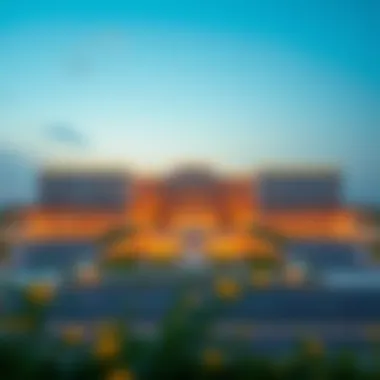
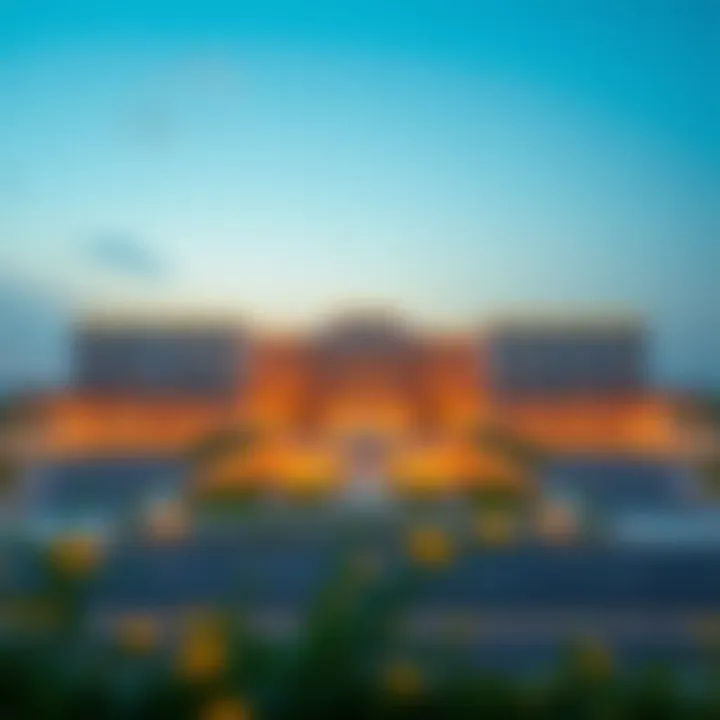
The journey of Al Qana has not been a simple walk in the park; instead, it’s a tale woven with ambition and hurdles that could make anyone’s head spin. Understanding the challenges faced in its development provides crucial insights into the project’s current trajectory and future potential. Addressing these issues is not just a matter of overcoming barriers, but rather, it is about strategizing and adapting to ensure that Al Qana becomes a significant pillar in Dubai's real estate landscape.
Among these challenges, regulatory hurdles and economic constraints loom largest. They are not just simple bumps in the road; they represent broader themes that can shape the investment appeal and viability of such a grand vision.
Regulatory Hurdles
Navigating through red tape can be a real nail-biter for any development initiative. For Al Qana, regulatory hurdles encompass a broad range of issues, from obtaining necessary licenses to complying with building codes that can change like the wind. The process requires not only patience but also a deep understanding of the legal landscape.
Developers often find themselves caught in a labyrinth of rules and approval processes, and Al Qana is no exception. The complexity increases further due to the dynamics of Dubai’s ever-evolving regulations, which are shaped by government policies aiming for broader urban development.
A few potential regulatory challenges include:
- Zoning Laws: Ensuring that the project aligns with designated uses in the master plan can lead to adjustments in design and layout, thus affecting timeframes and costs.
- Environmental Regulations: Sustainable development is high on Dubai's agenda. Compliance with strict environmental standards can slow down the progress.
- Approval Processes: Securing approvals from multiple entities—urban planners, environmental agencies, and local government—means longer timelines.
This is where having strong connections with local authorities and an understanding of the nuances of Dubai’s regulatory environment can make a world of difference.
Economic Constraints
Economic constraints also provide a significant bump on the road to Al Qana’s successful completion. In a city known for its glitzy skyscrapers and luxurious lifestyle, the financial realities can often be overshadowed by the bright lights of ambition. Investors need to weather the storm of fluctuating market conditions while grappling with the high costs associated with groundbreaking projects.
Factors to consider include:
- Funding Access: Finding the right mix of debt and equity can be tricky. With the unpredictability of financial markets, securing funding can take longer than anticipated, often delaying project timelines.
- Pricing Fluctuations: The costs of materials and labor can fluctuate significantly. A sudden rise can force construction teams to recalibrate their budgets or timelines.
- Market Demand: Understanding whether there is sufficient market demand for the project when the doors finally open can cause sleepless nights for stakeholders.
These economic constraints are not merely numbers on a balance sheet; they have real consequences on the momentum and perception of Al Qana among potential investors and buyers.
To wrap it up, navigating the challenges of regulatory compliance and economic viability is essential for Al Qana to shine brightly in Dubai’s competitive landscape. This will require not only strategic planning but a careful balance of aspirations and realities, ensuring that the project can truly contribute to the unfolding narrative of Dubai’s growth.
Future Prospects of Al Qana
Considering the ambitious nature of the Al Qana project, its future prospects are a topic worth exploring with keen eyes. With the rapid pace of urbanization in Dubai, the developments happening in Al Qana represent the full convergence of innovation and culture. Investors and stakeholders alike have a lot riding on its success, making it a focal point in discussions about the real estate landscape.
Particularly significant is how Al Qana is positioned to adapt to future market demands and technological advancements. Factors like sustainability, accessibility, and cultural relevance are paramount in today’s urban developments. For instance, integrating smart technology into building designs isn’t just a luxury; it’s becoming a necessity as consumer preferences shift. As such, Al Qana has the potential to respond effectively to these macro trends, ensuring it remains a desirable place for both residents and investors.
Projected Developments
The next phase of Al Qana is brimming with potential. The upcoming developments promise to elevate not only the project's profile but also the broader Dubai real estate market.
- Mixed-use Spaces: Plans are underway for creating mixed-use areas that seamlessly blend residential, commercial, and recreational spaces. This approach not only fosters a sense of community but also attracts diverse demographics.
- Sustainability Initiatives: Al Qana is looking to implement green building standards that aim to minimize the ecological footprint. Utilizing renewable energy sources is one of the proposed measures, alongside enhancing existing infrastructure to support electric vehicles and pedestrian-friendly zones.
- Arts and Culture: Upcoming initiatives will strengthen ties with local artists and cultural institutions, thus enriching the neighborhood’s artistic landscape. These projects will likely draw visitors and locals alike, boosting the economy.
As per recent city plans, the urbanization efforts promise to culminate into a vibrant hub that respects and nurtures the UAE's rich cultural heritage while moving forward in a sustainable manner.
Long-term Viability
When discussing the long-term viability of Al Qana, one must consider several key factors in the equation. The sustainability of any urban development is intrinsically linked to its economic performance, community engagement, and adaptability to change.
- Economic Resilience: Current market trends indicate that Al Qana can hold its own against economic fluctuations. With a diversified investment approach, the project is likely to weather potential downturns. Investors looking for stable returns might find Al Qana particularly appealing.
- Cultural Resilience: Al Qana’s commitment to cultural initiatives plays a critical role in its long-term viability. By incorporating arts, community events, and access to local heritage, it ensures that it remains relevant and vibrant in the eyes of future generations.
- Technological Advancements: Embracing technology not only in construction but also in operations will enhance efficiency. Digital platforms for amenities, real-time data, and AI-driven functionalities can significantly improve the resident experience, ensuring a competitive edge in the market.
In sum, the sustainability of Al Qana is intertwined with its ability to adapt and innovate. Its vision aligns with global trends of sustainable urban living, making it a significant player in Dubai’s real estate sector for years to come.
"The foresight to anticipate market changes today can spell the difference between success and stagnation tomorrow."
For more insights into sustainable urban projects and discussions, you can explore resources such as Wikipedia or visit Reddit.
Culmination
In summary, the importance of examining Al Qana within the realm of Dubai’s real estate landscape cannot be overstated. This unique development serves as not only a functional space but also a cultural and economic cornerstone for the community. By delving into its intricate architectural design, economic impact, and community engagement, we gain a holistic view of how Al Qana influences multiple dimensions of urban development in the city.
Summarizing Key Insights
Al Qana represents a significant shift in the way urban spaces are conceived, particularly in a bustling metropolis like Dubai. Key insights include:
- Architectural Innovation: The design concepts that Al Qana brings to the table are more than just aesthetic marvels; they incorporate sustainability and cutting-edge technology aimed at enhancing the living experience.
- Economic Contributions: By generating local employment and attracting international investment, Al Qana positively impacts the local economy.
- Cultural Engagement: The commitments to art and local heritage help bridge the gap between modern urbanization and traditional values, fostering a sense of community.
- Integration with Urban Planning: Al Qana’s strategic location and thoughtful integration with existing infrastructure illustrate a forward-thinking approach to city development.
Final Thoughts on the Impact of Al Qana
As we consider the future, it's clear that Al Qana is poised to play a pivotal role in shaping not just physical space, but also the socioeconomic fabric of Dubai. Its potential as a dynamic tourist attraction and residential hub indicates that it will continue to draw interest from investors and residents alike. Moreover, the successful melding of cultural heritage with modernity presents a model for other burgeoning urban areas around the globe. In essence, Al Qana is much more than a project; it is a beacon that highlights the aspirations of a city eager to redefine itself on the global stage.
"Al Qana is not just a site; it's a vision translating the possibilities of urban living into reality."
For more recent insights into developments like Al Qana, websites such as Dubai Investments and Gulf News offer ongoing updates that highlight market trends, community involvement, and infrastructure projects that are pivotal for future stakeholders.





